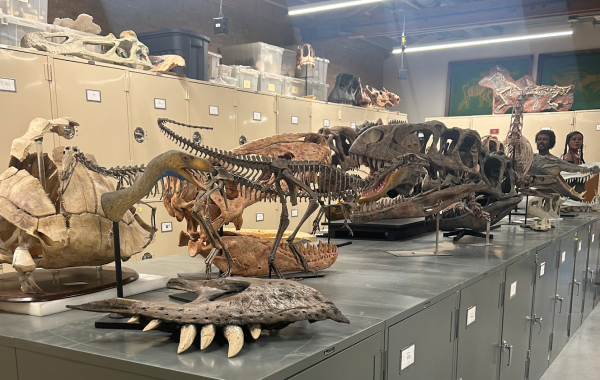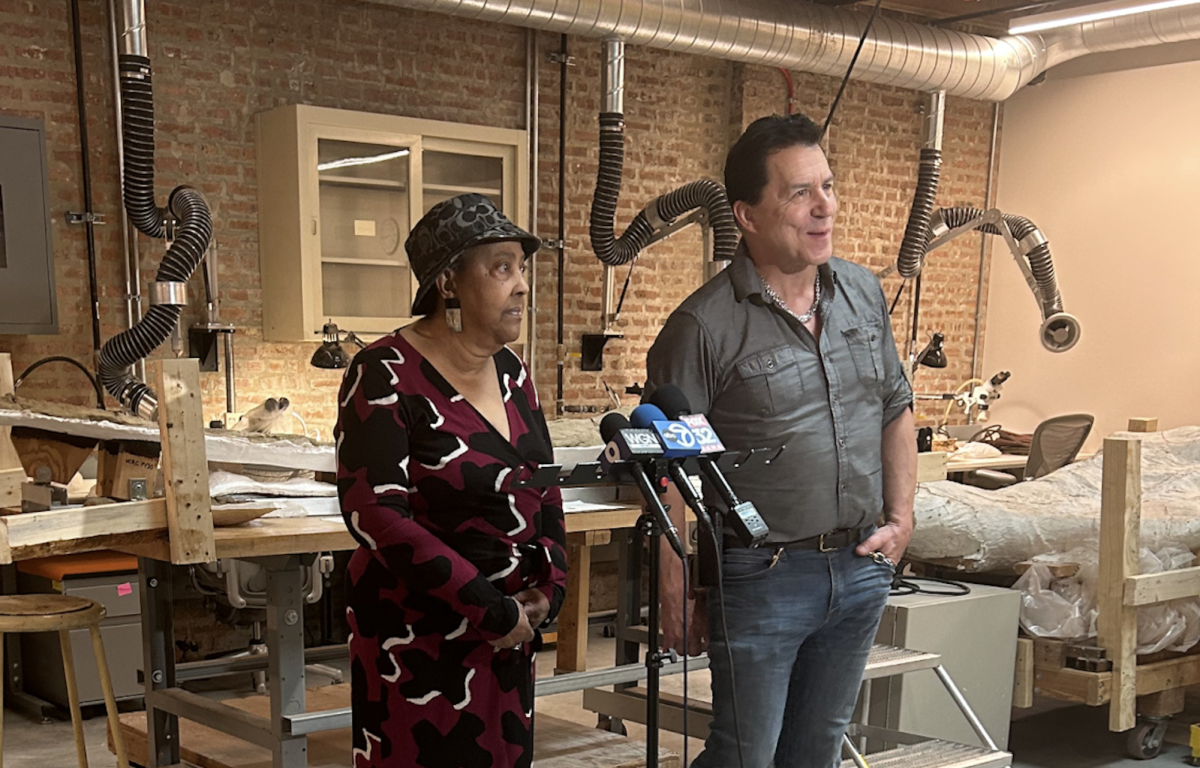Nestled in the heart of Washington Park, adjacent to a McDonald’s and a gas station, is the University of Chicago’s brand-new fossil lab—one of the largest of its kind. Officially opened to the public on May 2, the facility, headed by paleontologist and professor of organismal biology and anatomy Paul Sereno, combines paleontological research with education.
The 6,000-square-foot space includes the research room, where students can attend lectures and observe pre-prepared fossils; the collections room, which houses the fossils comprising UChicago’s collection; and the fossil preparation room, which contains the necessary equipment for cleaning fossils. The collection is composed of fossils from both extinct and thriving species, containing everything from dinosaur toenails and “super-croc” skulls to fossilized human skeletons predating the ancient Egyptians.

Sereno explained his vision for the facility, reflecting on the significance of its location. “[This is] a first-rate, world premiere [facility]—the greatest fossil lab in the middle of a neighborhood [that] is inviting to the neighborhood,” Sereno said. “[I’ve reached out to] all the major schools in this direction… because they can come for tours, they can come to find internships… and at another table, there’ll be a postdoc working on fossils… I’m thrilled because it’s sharing what we love in what we do, which is science.”
Echoing Sereno, Washington Park Advisory Council Representative Cecilia Butler, who has been working closely with Sereno throughout the development of the fossil lab, celebrated the lab’s establishment as a milestone for the community.
“We have the first community fossil center in the country,” Butler said. “One of the best things that the University of Chicago has done was to give Paul the ‘go’ to come to Washington Park. [When] he came to me, I jumped on it because I know there’s nothing like this… and I want the world to come to Washington Park to not only see our great park, but to see the fossil lab.”
The lab now occupies a building constructed in 1921 that was a car wash only a few years ago. According to Sereno, much of the space’s original ceiling and interior have been preserved, allowing it to serve a dual purpose as both a piece of history and a place of learning. “We’ve designed it to be a dream paleo lab, but also one that’s accessible,” Sereno said.









